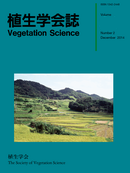Volume 14, Issue 2
Displaying 1-6 of 6 articles from this issue
- |<
- <
- 1
- >
- >|
-
Article type: Article
1997Volume 14Issue 2 Pages 77-89
Published: December 25, 1997
Released on J-STAGE: January 06, 2017
Download PDF (1605K) -
Article type: Article
1997Volume 14Issue 2 Pages 91-104
Published: December 25, 1997
Released on J-STAGE: January 06, 2017
Download PDF (1437K) -
Article type: Article
1997Volume 14Issue 2 Pages 105-117
Published: December 25, 1997
Released on J-STAGE: January 06, 2017
Download PDF (1387K) -
Article type: Article
1997Volume 14Issue 2 Pages 119-127
Published: December 25, 1997
Released on J-STAGE: January 06, 2017
Download PDF (1114K) -
Article type: Article
1997Volume 14Issue 2 Pages 129-139
Published: December 25, 1997
Released on J-STAGE: January 06, 2017
Download PDF (1695K) -
Article type: Article
1997Volume 14Issue 2 Pages 141-149
Published: December 25, 1997
Released on J-STAGE: January 06, 2017
Download PDF (1024K)
- |<
- <
- 1
- >
- >|
